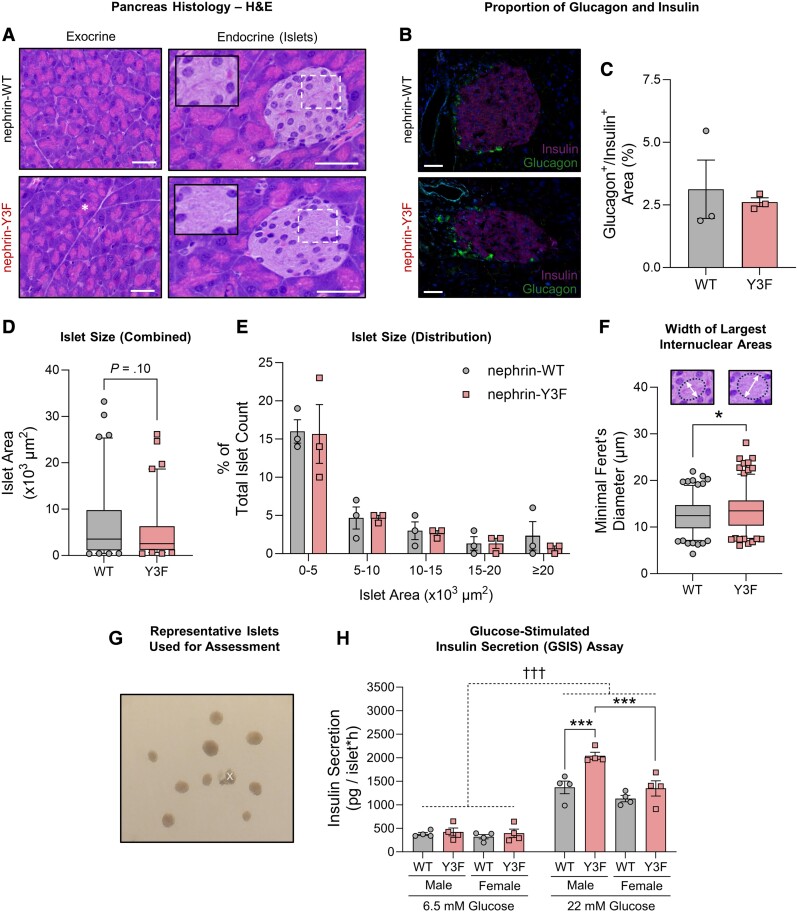Figure 2.
Nephrin-Y3F mice show minor alterations in islet structure and have a moderate enhancement of glucose-dependent insulin secretion. (A) Brightfield images of H&E-stained pancreatic exocrine and endocrine (islet) tissues from adult male WT or nephrin-Y3F mice. Nephrin-Y3F mice developed structurally comparable zymogen granules (asterisk) and islets but had distinct clustering of islet nuclei and larger gaps observed between these clusters (insets). (B) Immunofluorescence images showing similar insulin and glucagon staining between adult male WT and nephrin-Y3F mice. (C) Percentage quantification of glucagon-stained area to insulin-positive area from (B) (16-28 islets per mouse; 3 mice per group). (D) Box-and-whisker plot showing all islet area quantifications per genotype from images in (A) (17-39 islets per mouse; 3 mice per group), with no significant differences between genotypes. (E) Percentage distribution of islets from (A) within specified size ranges (3 mice per group). (F) Width measurements of spaces between clustered nuclei. Nephrin-Y3F mice had larger spaces between nuclear clusters, as measured using the minimal Feret's diameter of an ellipse between nuclei (examples shown in graph), with the 3 largest ellipses being quantified per islet (17-39 islets per mouse; 3 mice per group). (G) Representative image of islets to be used for GSIS assay. Islets with attached acinar tissue (noted by “x”) were omitted from assessment. (H) GSIS assays using primary islets show sex-specific enhancement of insulin release in nephrin-Y3F mice (n = 4). Bars show mean ± SEM. Box-and-whisker plots show median ± 5-95th percentiles. Statistical significance between 2 groups was determined using a Student's t-test, and a 3-way ANOVA with a post hoc Tukey's test was used for the GSIS assay. Significant differences are indicated as * for P < .05 and †††/*** for P < .001. Scale bars are 40 µm.
Abbreviations: GSIS, glucose-stimulated insulin secretion; H&E, hematoxylin and eosin; WT, wild-type

